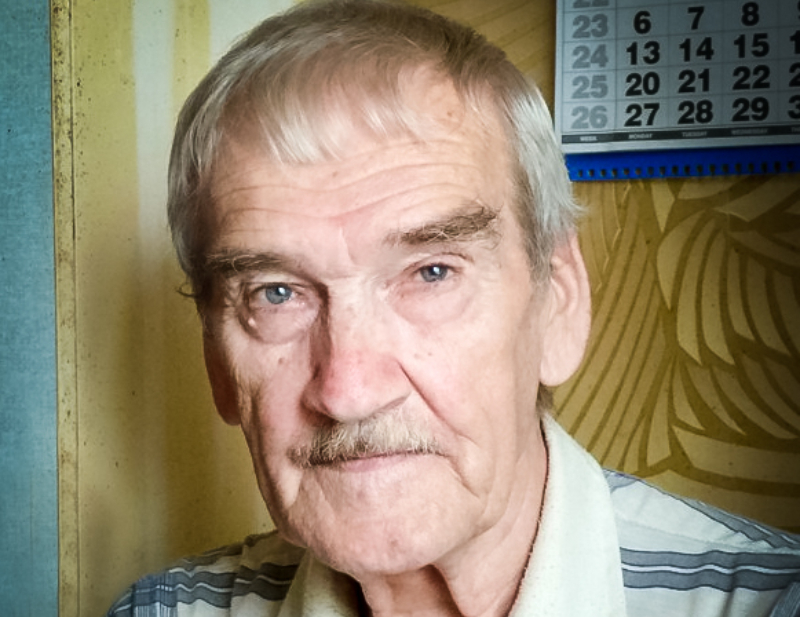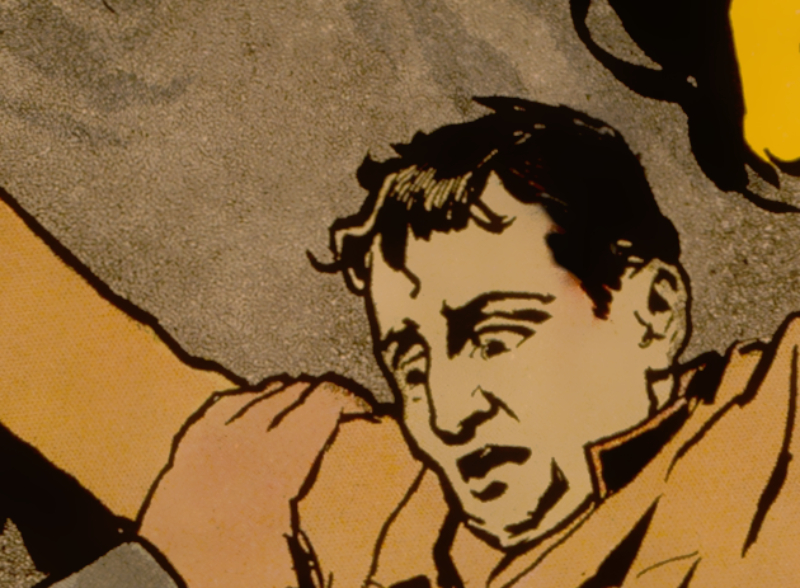Bizarre Battles
There are countless horrific stories from throughout the history of war. Nevertheless, stories about the military can be strange and entertaining as well and sometimes these tales can seem too farfetched to be real. Yet these stories, steeped in legend and rumor, exist to remind us that history is sometimes kind of weird.

Adrian Carton De Wiart
Lieutenant-General Sir Adrian Paul Ghislain Carton de Wiart was a British army officer who fought in the Boer conflict, WWI, and WWII. Throughout his years of services, he was shot in the face, head, stomach, ankle, leg, hip, and ear; was blinded in one eye; managed to survive two plane crashes; tunneled out of a POW camp; and tore off his own fingers when his doctor refused. When describing his experience in WWI, he wrote, "Frankly, I had enjoyed the war".
 Henry Walter Barnett, Wikimedia Commons
Henry Walter Barnett, Wikimedia Commons
The Man Who Prevented WWIII
Vasily Arkhipov was a Soviet Naval officer who refused to fire a nuclear torpedo against United States Navy ships at a crucial moment in the Cuban Missile Crisis of October 1962. When US ships dropped depth charges, the Soviets believed a conflict had started, but Arkhipov would not consent to the use of nuclear arms in retaliation. According to historians, Arkhipov may very well have prevented a nuclear conflict.
 Olga Arkhipova, CC BY-SA 4.0, Wikimedia Commons
Olga Arkhipova, CC BY-SA 4.0, Wikimedia Commons
Another Man Who Prevented WWIII
That wasn't the last time a Soviet officer averted a nuclear conflict. In 1983, a Soviet early-warning system erroneously reported a US missile attack against the USSR. Stanislav Petrov, a duty officer at the command center, judged the reports to be a false alarm, and disobeying direct orders, prevented a retaliatory nuclear attack on the United States and its NATO allies.
 Queery-54, CC BY-SA 4.0, Wikimedia Commons
Queery-54, CC BY-SA 4.0, Wikimedia Commons
The Bolivian Navy
Bolivia has a 5000-personnel navy, despite the fact that Bolivia is a land-locked country with no direct access to any ocean. A navy was established in 1963, and mainly patrols rivers for drug trafficking.
 Israel_soliz, CC BY-SA 4.0, Wikimedia Commons
Israel_soliz, CC BY-SA 4.0, Wikimedia Commons
The Nebraska Navy
Bolivia is not the only landlocked entity with a navy. In Nebraska, the only triply landlocked US state, the highest civic honor is Admiral in the Great Navy of the State of Nebraska. An honorary title awarded by the state governor, the honor requires no specific duties, and carries with it no pay or any other compensation.
 New York Sunday News, Wikimedia Commons
New York Sunday News, Wikimedia Commons
The Crucified Soldier
During WWI, a story was spread about a soldier who had been crucified with bayonets on a barn door or a tree. Three witnesses claimed to have seen an unidentified Canadian soldier near Ypres, Belgium in 1915. Although it was never confirmed and no body was ever found, the story persisted as anti-German propaganda.
 Fernando Amorsolo, Wikimedia Commons
Fernando Amorsolo, Wikimedia Commons
The Man Who Shot John Wilkes Booth
An English-born American soldier during the US Civil War, Sergeant Thomas H. “Boston” Corbett was the man who fatally shot John Wilkes Booth, the assassin of President Abraham Lincoln. Known as being devoutly religious and quite eccentric, Corbett nevertheless was celebrated as a hero. In 1887, Corbett was committed to Topeka Asylum for the Insane after being declared insane. A year later, he escaped the institution and disappeared.
 Mathew Benjamin Brady, Wikimedia Commons
Mathew Benjamin Brady, Wikimedia Commons
The Last Man To Perish
Henry Gunther had the misfortune and bad luck of being the last person to perish in WWI. An American soldier, Gunther was slain at 10:59 am on November 11, 1918, one minute before the Armistice was to take effect at 11:00 am. Gunther had been demoted and was hoping to regain his rank before fighting ended.
 Concord, CC BY-SA 3.0 , Wikimedia Commons
Concord, CC BY-SA 3.0 , Wikimedia Commons
The Ice Cream Ship
A barge was employed by the US Navy in the Pacific Theater of WWII to produce ice cream in large quantities, which was to be provisioned to sailors and US Marines. At a cost of 1 million dollars, the barge produced 10 gallons (38 liters) of ice cream every seven minutes. Intended as a morale-booster in the tropical climate of the Pacific, the US Army built three of these barges for the express purpose of making ice cream.
 National Dairy Products Corporation, Wikimedia Commons
National Dairy Products Corporation, Wikimedia Commons
The Montauk Project
The Montauk Project is a supposed series of US government projects, focusing on psychological techniques and research into time travel. The most famous story to come from these rumors is the Philadelphia Experiment, where the US Navy attempted to make a destroyer disappear during WWII. Witnesses claim the ship disappeared, was teleported to Norfolk, Virginia, and then reappeared in the Philadelphia yard. Even more astonished, the ship's crew was said to have suffered various side effects, including being "frozen" in place.
The Soviet Night Witches
The Night Witches were an all-woman Soviet force during WWII. Although women were officially barred from combat, Major Marina Raskova used her personal contacts with Joseph Stalin to obtain permission to form female combat units. They were highly successful and contained 23 different Heroes of the Soviet Union.
 Aleksandr Gribovsky, Wikimedia Commons
Aleksandr Gribovsky, Wikimedia Commons
The Japanese Soldier Who Surrendered In 1974
Hiroo Onoda was an officer in the Imperial Japanese Army during WWII who continued fighting after 1945. For 29 years, Onoda carried out guerrilla actions on an Island in the Philippines. Onoda was contacted in 1974, but refused to surrender until he was relieved of duty by his former commanding officer, Major Yoshimi Taniguchi.
 Malacañang Palace, Wikimedia Commons
Malacañang Palace, Wikimedia Commons
The Man Who Survived Both Atomic Blasts Of Japan
Tsutomu Yamaguchi was a Japanese marine engineer. A resident of Nagasaki, Yamaguchi was in Hiroshima on business for his employer when the city was bombarded on August 6, 1945. He returned to Nagasaki the following day and returned to work on August 9, the day of the second atomic explosion.
Nuking The Moon
In 1958, a top-secret plan called Project A119 was developed by the United States Air Force. The plan called for the US to detonate a nuclear explosive on the Moon, in the name of science. After the USSR took an early lead in the Space Race in the 1950s, the US hoped to boost morale at home while demonstrating their might to the Soviets.
The Highest Battlefield On Earth
The Siachen Glacier is located in the eastern range in the Himalayas, on the border between India and Pakistan. The glacier's region is the highest battleground on Earth, as Pakistan and India have fought intermittently since April 1984. Both countries maintain a permanent armed presence in the region, at a height of over 20,000 feet.
The Man Who Spared The Führer's Life
Private Henry Tandey was a British recipient of the Victoria Cross and the second most highly decorated British private of WWI. During a battle, a wounded German soldier wandered into Tandey's line of fire and Tandey chose not to shoot. Tandey spared the wounded and disarmed German, and although there is no direct evidence, it has long been claimed that the German officer was Adolf Hitler.
 Richard Harvey, Wikimedia Commons
Richard Harvey, Wikimedia Commons
The Führer's Nephew Who Served In The United States Navy
William Patrick Stuart-Houston was born William Patrick Hitler, the son of the Führer's half-brother Alois. Born in England, William emigrated to the United States, where he became an American citizen and served in the United States Navy against Germany during WWII. He changed his surname after WWII.
American And German Forces Team Up Against The Nazis
The Battle of Castle Itter was fought on May 5, 1945, during the last days of the European Theater of WWII. Containing high-profile POWs, the castle was targeted by an SS division who planned on eliminating the POWs. The commander of the castle, realizing WWII was over, defended the prisoners and was joined by American forces. This became one of two known times during the conflict in which Americans and Germans fought side by side.
 Unknown Author, Wikimedia Commons
Unknown Author, Wikimedia Commons
Germans Vs Germans
Operation Viking was a German naval action into the North Sea. Poor communication resulted in a conflict between the German navy and air force. The battle resulted in the loss of two German ships, with only sixty survivors being rescued.
 Bundesarchiv, Bild, CC-BY-SA 3.0, Wikimedia Commons
Bundesarchiv, Bild, CC-BY-SA 3.0, Wikimedia Commons
Australia's Great Emu Conflict
An overpopulation of emus resulted in an operation by Australian forces in 1932. Royal Australian Artillery, armed with Lewis guns, unsuccessfully attempted to curb the population of the emus. Although many emus were wiped out, the emu population persisted.
The Tanzanian Chimpanzee Conflict
The Gombe Chimpanzee War was a conflict between two communities of chimpanzees in Gombe Stream National Park in Tanzania, between 1974 and 1978. A splinter group of chimpanzees moved to a different area resulting in conflict over resources with the main group. During the four-year clash, all males of the separatist group were eliminated and their territory was taken by the main group.
 Roland, CC BY-SA 2.0, Wikimedia Commons
Roland, CC BY-SA 2.0, Wikimedia Commons
White Supremacists Attempt To Overthrow The Government Of Dominica
Operation Red Dog was a plot by Canadian and American white supremacists and the Ku Klux Klan to overthrow the government of Dominica. The plan was thwarted by US federal agents in New Orleans and the news media dubbed the plot "Bayou of Pigs".
 David Stanley, CC BY 2.0, Wikimedia Commons
David Stanley, CC BY 2.0, Wikimedia Commons
Collecting Soviet Garbage
Operation Tamarisk was an operation run by the intelligence services of the US, UK, and France during the Cold War. Mainly centered on East Germany, the operation managed to collect discarded paper, letters, and garbage from Soviet trash bins, including used toilet paper. Considered a success, the operation managed to collect a ton of useful information, all freely available in garbage cans.
No Shots Were Fired In One Of The Longest Wars In History
The Three Hundred and Thirty Five Years' War was a conflict between the Netherlands and the Isles of Scilly, off the southwest coast of Great Britain. Without a peace treaty, a state of conflict lasted for 335 years. During that time, no shots were fired and peace was finally declared in 1986.
 Roantrum, CC BY 2.0,Wikimedia Commons
Roantrum, CC BY 2.0,Wikimedia Commons
The Toyota Conflict
The Great Toyota War took place in 1987 on the Chad–Libya border and was the last phase of the Chadian–Libyan conflict. The name was derived from the use of Toyota pickup trucks by Chadian forces. This resulted in a defeat for Libya who lost a tenth of its army—7,500 men.
 Ministry of Defence and Armed Forces of the Czech Republic, Wikimedia Commons
Ministry of Defence and Armed Forces of the Czech Republic, Wikimedia Commons
The Bat Bomb
An experimental weapon was developed by the US during WWII. Explosives with compartments containing hibernating bats with parachutes were to be dropped from planes onto enemy targets. The bats would disperse into buildings, to be detonated by timers.
 Imperial War Museums, Wikimedia Commons
Imperial War Museums, Wikimedia Commons
Project Pigeon
There were other attempts to use animals during WWII. Project Pigeon was developed by American behaviorist B. F. Skinner to create pigeon-controlled guided explosives. The program was canceled in 1944 because it was believed that "further prosecution of this project would seriously delay others which in the minds of the Division have more immediate promise of combat application".
Anti-Tank Dogs
A Soviet experiment during WWII, dogs were taught to carry explosives to tanks, armored vehicles, and other targets. They were used from 1941 to 1943 against German tanks but the project ultimately failed as the dogs were generally afraid of the tanks and would not go near them.
 Unknown Author, Wikimedia Commons
Unknown Author, Wikimedia Commons
Sergeant Stubby
Sergeant Stubby was a dog who served during WWI. He served for 18 months and participated in 17 battles and four offensives on the Western Front, saving his comrades from surprise mustard gas attacks. He also found and comforted the wounded, and once caught a German soldier by the seat of his pants. Stubby was the most decorated dog of WWI and the only dog to be nominated and promoted to sergeant.
 Unknown Author, Wikimedia Commons
Unknown Author, Wikimedia Commons
United States Navy Marine Mammal Program
The US Navy Marine Mammal Program was administered by the US Navy to study the strategic use of marine mammals like bottlenose dolphins and California sea lions. They wanted to see if the animals could perform tasks such as ship and harbor protection, mine detection and clearance, and equipment recovery. While it sounds bizarre, animal teams have been deployed for use in combat zones during several conflicts, including the Vietnam and Iraq conflicts.
The "Gay Bomb"
In the 1990s, the United States Air Force conducted research into psychochemical tactics with the intent of generating mutual sensual attraction among enemy forces, causing mass confusion and panic. Documents reveal that a strong stimulant could be dropped on the enemy, causing intimacy between men. The documents described these agents as "distasteful but completely non-lethal".
The Leaking Toilet
The German submarine U-1206 was in use during WWII. The submarine was targeted by British forces after she was forced to the surface because of problems arising from a malfunctioning toilet.
 Reminiscencerestore, CC BY 2.0, Wikimedia Commons
Reminiscencerestore, CC BY 2.0, Wikimedia Commons
The Aircraft Carrier Made Of Ice
Project Habakkuk was a plan by the British during the WWII to build an aircraft carrier out of pykrete, a mixture of wood pulp and ice. It was to be used in the mid-Atlantic, as the German submarines in those waters were beyond the flight range of land-based planes at that time. According to the plan, the new carrier would have been the largest ship ever. The project was shelved due to the costs and the increased availability of longer-range aircraft.
 The U.S. National Archives, Picryl
The U.S. National Archives, Picryl
The Stench Weapon
A top secret, non-lethal chemical weapon—codenamed “Who Me”—was developed by the American Office of Strategic Services during WWII, to be used by the French Resistance against German officers. Who Me smelled of fecal matter and was issued to be sprayed on a German officer, humiliating him and demoralizing the occupying German forces.
A Ship Disguised As An Island
When Japan invaded the Dutch East Indies at the end of 1941, the Dutch HNLMS Abraham Crijnssen was ordered to retreat to Australia. In order to do so, the ship was disguised as a tropical island to avoid detection and was the last Dutch ship to escape from the region. Not having enough armaments to defend itself, the ship was heavily camouflaged with jungle foliage, giving the impression of a small island.
 Netherlands Indies Government Information Service, Wikimedia Commons
Netherlands Indies Government Information Service, Wikimedia Commons
The Bazooka Vespa
The Vespa 150 TAP was an anti-tank scooter made in the 1950s from a Vespa scooter, for use with French paratroops. Introduced in 1956, the scooter was modified from a civilian Vespa and included a reinforced frame and a small anti-armor cannon.
 C.Galliani, CC BY 3.0, Wikimedia Commons
C.Galliani, CC BY 3.0, Wikimedia Commons
North Korea And The United States Team Up To Defeat Somali Pirates
The Dai Hong Dan incident took place in October 2007 when a North Korean cargo vessel in the Indian Ocean was targeted and seized by Somali pirates. The following day, the crew of the vessel overpowered the pirates with the support of an intervening US naval vessel. The North Korean press unexpectedly expressed gratitude to the United States for their help.
The Invasion Of Iceland
Hoping to avoid a German invasion of Iceland, the United Kingdom's Royal Navy and Royal Marines invaded and occupied the neutral country during WWII. Iceland was independently governed, but was a territory of Denmark, who were occupied themselves by Germany. The Government of Iceland issued a protest, charging that its neutrality had been "flagrantly violated" and "its independence infringed".
 Royal Navy official photographer, Wikimedia Commons
Royal Navy official photographer, Wikimedia Commons
The Football Conflict
The Football War was a brief conflict fought between El Salvador and Honduras in 1969. Existing tensions over land reforms led to the two countries rioting during a 1970 FIFA World Cup qualifier game. The Salvadorans then launched an attack against Honduras, resulting in four days of armed conflict. The countries agreed to a ceasefire, but it would still be another month before the Salvadorans withdrew their forces from Honduras.
 Bernardo Moncada, CC BY-SA 3.0, Wikimedia Commons
Bernardo Moncada, CC BY-SA 3.0, Wikimedia Commons
The Pentagon's Zombie Apocalypse Plan
CONPLAN 8888, or Counter-Zombie Dominance, is a document describing a detailed plan for the armed forces of the United States to defend the US against zombies. Initially classified by the United States Intelligence Community, the document was declassified, and its contents revealed a training document for junior officers. The document was very detailed, and even classified eight different kinds of zombies. Supposedly, the “zombie survival plan” was just a fun training exercise that avoided the political risks of using a real country in training program, but the attention to detail in the plan has got our tin hats tingling
 Mariordo Camila Ferreira & Mario Duran, CC BY-SA 3.0, Wikimedia Commons
Mariordo Camila Ferreira & Mario Duran, CC BY-SA 3.0, Wikimedia Commons






















